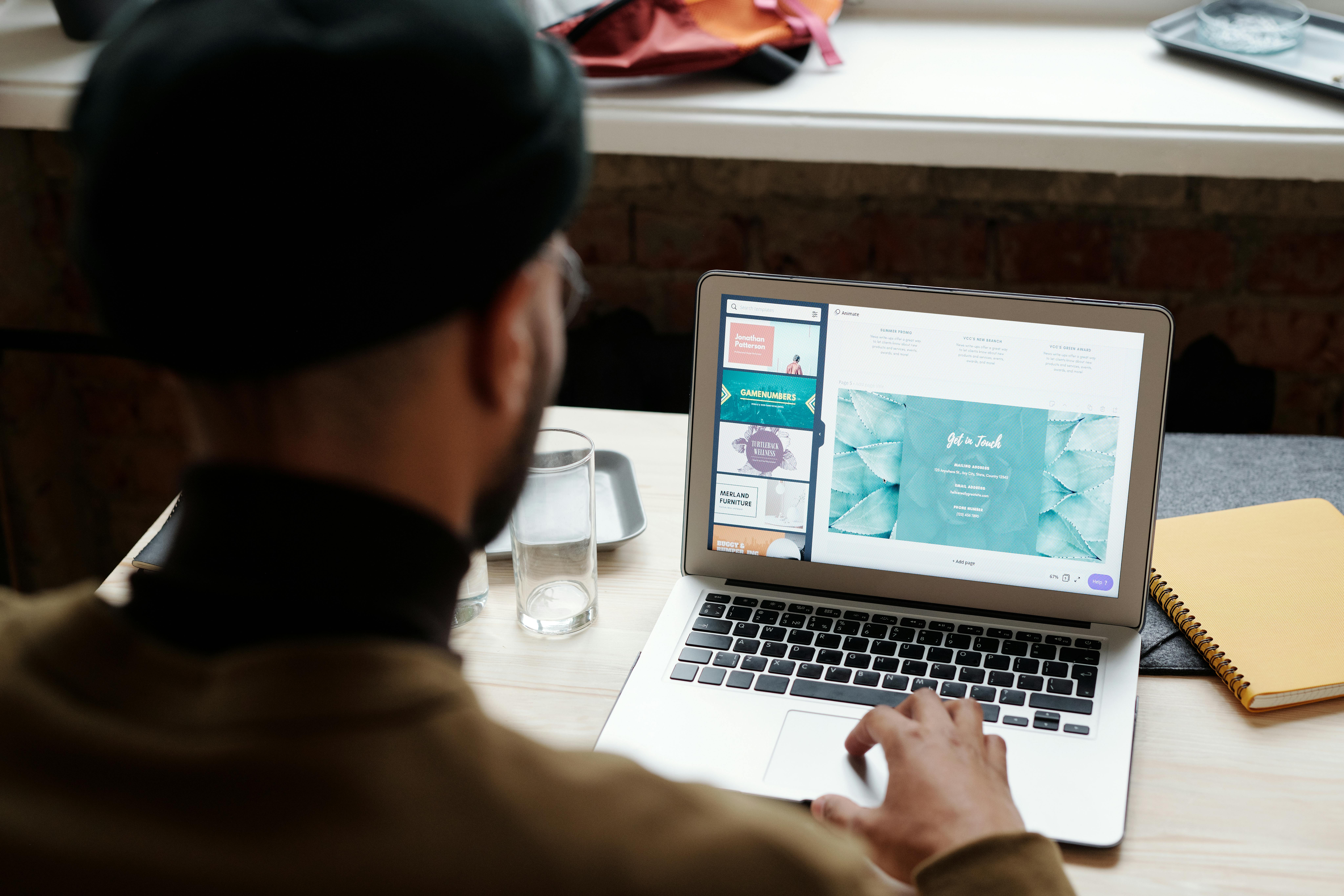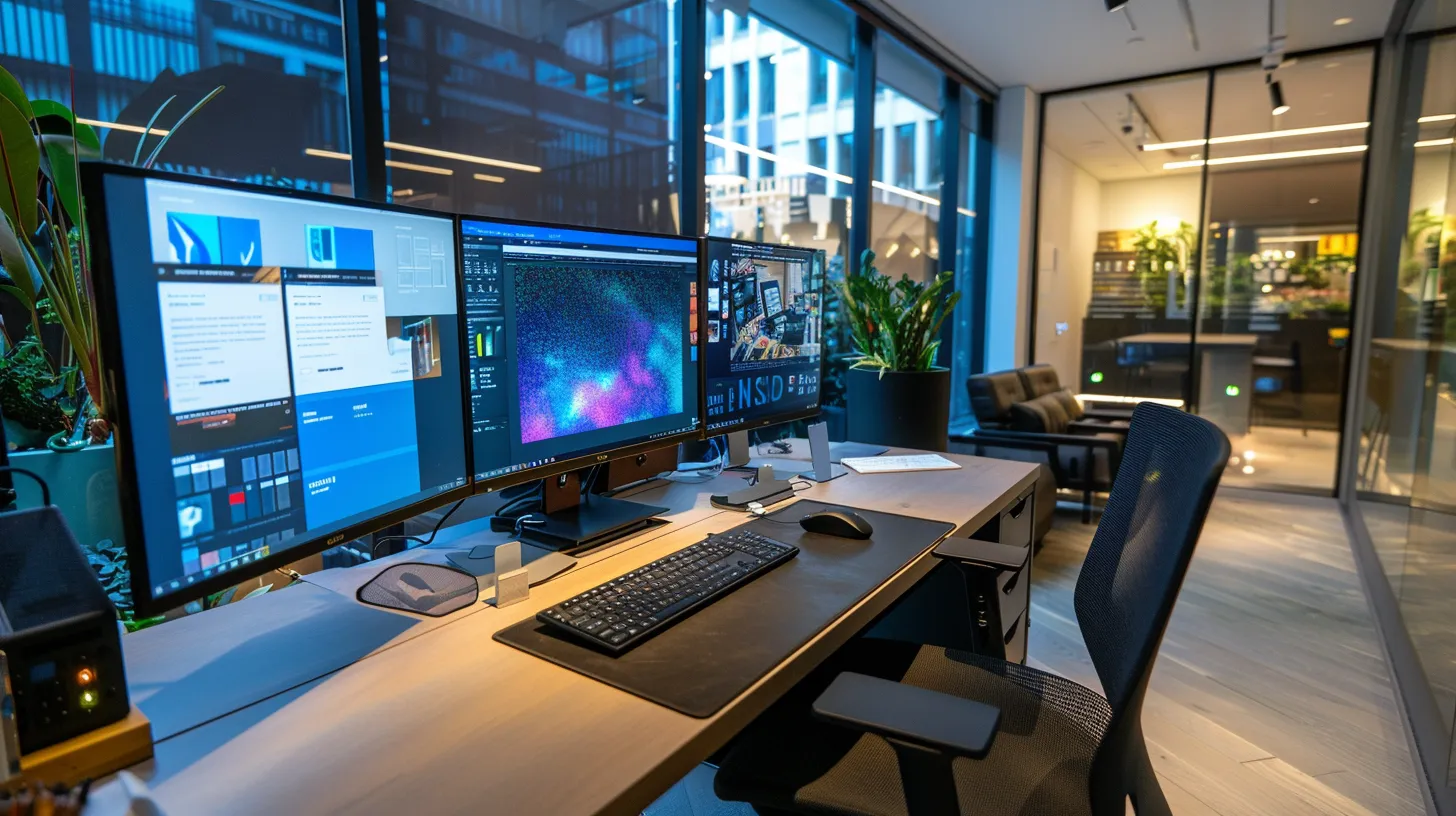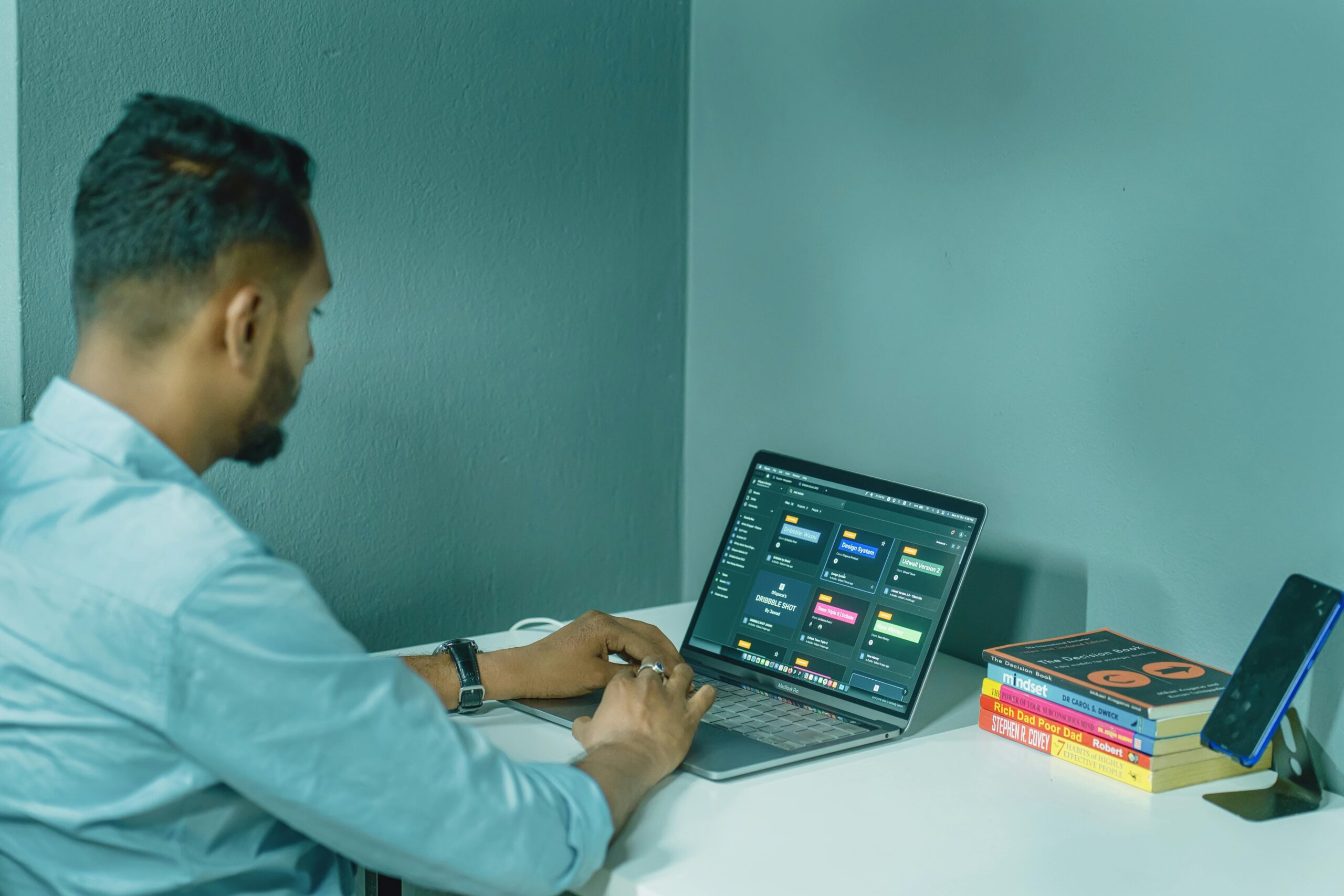Many businesses struggle to keep their websites fresh and appealing. Trends in web design are constantly evolving, and staying updated can directly impact user engagement and sales. This article will explore the importance of adapting to the latest design trends, key elements shaping 2025, and practical steps to enhance accessibility. Readers will learn how modern design can set them apart from competitors and improve their online visibility. Embracing these trends can address issues of outdated aesthetics and functionality, offering a pathway to a stronger online presence.
Key Takeaways
- Mobile responsiveness is crucial for user engagement and easy navigation
- Effective design builds credibility and encourages users to return to the site
- Fast loading times are essential for retaining visitors and enhancing their experience
- Minimalism and hierarchy improve clarity and focus on important content elements
- Regular updates and design assessments keep the website aligned with current trends and user needs
Understanding the Importance of Adapting to Web Design Trends in 2025

Responsive web design plays a crucial role in enhancing user experience and keeping visitors on a site. Design influences website credibility and trust, which are vital for encouraging further interactions. Mobile responsiveness boosts user engagement, while fast loading times significantly impact revenue. Each of these factors will be addressed, highlighting their importance for a successful home page.
The Impact of User Experience on Website Retention
User experience is crucial for retaining visitors on a website. Engaging elements like kinetic typography can enhance the site’s narrative, making information more accessible and enjoyable. As digital marketing becomes increasingly competitive, prioritizing user experience can attract visitors and encourage them to return. This focus can ultimately improve conversion rates and strengthen a business’s online presence.
How Design Influences Website Credibility and Trust
A well-designed website enhances its usability and builds credibility with visitors. Elements such as effective graphic design and strong contrast help draw attention to key information, making it more accessible and appealing. This not only fosters trust but also supports content marketing efforts, as users are more likely to engage with sites that feel professional and polished, often sharing their positive experiences on social media.
- Effective graphic design builds credibility.
- Strong contrast improves usability.
- Trust enhances user engagement.
- Positive experiences lead to social media shares.
The Role of Mobile Responsiveness in User Engagement
Mobile responsiveness is crucial for maintaining user engagement in today’s digital landscape. Websites that are optimized for mobile devices enable users to navigate easily with their thumbs, which is increasingly important as more people rely on smartphones for browsing.
Incorporating design elements such as negative space enhances clarity and focus, creating a more streamlined experience. Techniques like monochrome palettes provide a cohesive look, while parallax scrolling adds a modern touch that captures users’ attention and encourages them to stay longer and interact more with the site.
Additionally, machine learning can help personalize user experiences based on individual interactions, further enhancing usability and engagement on mobile platforms.
The Significance of Fast Loading Times for Modern Websites
Rapid loading times play a crucial role in shaping user perception and maintaining their attention. A website that loads swiftly not only fulfills user expectations but also elevates the overall experience, enabling effortless navigation and smooth interactions. Furthermore, incorporating personalized elements, such as engaging gamification features, can captivate users and encourage them to linger longer on the site. In contrast, a sluggish website can frustrate visitors and lead them to abandon their journey altogether.
Key Web Design Trends Shaping 2025

Embracing minimalism allows for clean and efficient website design, enhancing user experience. The rise of dark mode benefits users by reducing eye strain, while immersive media like videos and animations evoke emotion and keep visitors engaged. Simplified navigation further improves the user journey, making landing pages more effective at attracting and retaining visitors.
Embracing Minimalism for Clean and Efficient Design
Embracing minimalism in web design significantly enhances user experience by reducing clutter and emphasizing essential elements. A well-structured hierarchy allows users to navigate effortlessly, decreasing eye strain and promoting engagement. The integration of lazy loading techniques further boosts website performance, making it possible to deliver content smarter and quickly, aligning with modern web development practices that prioritize efficiency and intelligence.
The Rise of Dark Mode and Its Benefits for Users
The rise of dark mode in web design has become a significant trend in 2025, offering notable benefits for users. This design choice not only reduces eye strain during prolonged use but also supports sustainability efforts by consuming less battery power on devices. Websites that adopt dark mode can enhance their marketing strategy by appealing to a growing audience interested in modern aesthetics. This approach makes navigation more enjoyable and improves the overall user experience, especially when subscribing to newsletters or accessing 3D modeling content.
Utilizing Immersive Media Like Videos and Animations
Utilizing immersive media such as videos and animations can significantly enhance a website’s appeal in the current landscape. This approach fosters greater immersion, capturing users’ attention while providing engaging content that can convey messages more effectively than traditional text. For instance, integrating virtual reality elements can enrich user interaction and increase dwell time, addressing the need for memorable experiences and impacting key performance metrics like conversion rates. By adopting colors that resonate with Pantone trends, businesses can further resonate with their target audience, making their headlines pop and attracting even more visitors.
- Engaging content leads to improved user retention.
- Immersive experiences create memorable interactions.
- Visual elements can effectively convey messages.
- Trendy colors enhance aesthetic appeal.
Navigational Simplicity to Enhance User Journey
Navigational simplicity is essential for improving user experience, especially on mobile devices where ease of access matters greatly. Engaging web design with straightforward navigation allows users to find what they are looking for quickly, enhancing both interactivity and storytelling elements on the site. As users enjoy seamless journeys through a website, it builds brand awareness and encourages repeat visits, ultimately leading to better overall engagement.
Enhancing Accessibility Through Modern Design Trends

Implementing best practices for ADA compliance is essential for enhancing website accessibility. This ensures that all consumers can engage with content, creating a stronger value proposition. Additionally, exploring inclusive design benefits not only customers but also expands reach. Various tools and resources can assist in improving accessibility, making it easier for illustrators and developers to create more engaging websites that cater to a wider audience.
Implementing Best Practices for ADA Compliance
Implementing best practices for ADA compliance is essential for creating a website that is accessible to all users, regardless of their abilities. This commitment not only enhances customer service but also positions a brand favorably in search engine rankings, as accessibility can positively impact SEO. Utilizing automation tools to assess and improve accessibility features showcases creativity while ensuring a seamless experience for every visitor, ultimately driving engagement and fostering loyalty.
The Benefits of Inclusive Design for a Wider Audience
Inclusive design broadens the reach of a website by ensuring that it caters to a diverse target audience, including those with varying abilities. By optimizing user interfaces and incorporating features like voice search and accessible buttons, businesses create a more engaging experience that aligns with modern browsing habits. Furthermore, adopting environmentally friendly practices in design not only appeals to conscientious users but also enhances overall brand perception, fostering stronger connections with visitors.
Tools and Resources for Improving Website Accessibility
Improving website accessibility involves utilizing various tools and resources that aid in enhancing user experience design. For instance, tools like accessible color contrast checkers and screen reader simulators help designers understand how their choices impact users with different needs. By integrating ample white space and ensuring smooth scroll functionality, websites can accommodate a broader audience, making navigation effortless and enjoyable for everyone, including those engaged in activities like scrapbooking, where organization and clarity are essential.
Competitive Advantage Through Trend Adoption
Fresh designs are essential for attracting and keeping customers engaged. This section will explore how updating visual concepts can enhance web accessibility and affect user behavior. Case studies will highlight businesses that have successfully adapted to modern trends. Further analysis of competitors’ design choices will provide strategic insights for optimizing a website’s impact in today’s digital landscape.
How Fresh Designs Attract and Retain Customers
Fresh designs play a vital role in attracting and retaining customers by creating visually appealing and intuitive experiences. Incorporating elements like parallax scrolling enriches user engagement, while streamlined navigation allows visitors to access content effortlessly, whether they are using a desktop computer or mobile device. By employing design thinking strategies, businesses can create websites that not only showcase stunning photography but also effectively guide users through their offerings, ultimately boosting conversion rates and enhancing brand loyalty:
Case Studies of Businesses Benefiting From Trend Adaptation
Businesses that have embraced the latest design trends have seen significant improvements in user engagement and overall performance. For example, a retail company updated its website to include a modern flat design with a clean page layout and a harmonious color scheme, resulting in a dramatic increase in conversion rates. Another tech startup adopted a serif font to enhance readability and paired it with a fresh palette, which not only attracted more visitors but also fostered a more professional brand image, showcasing the importance of adapting to contemporary design trends for competitive advantage:
Analyzing Competitors’ Design Choices for Strategic Insights
Analyzing competitors’ design choices offers valuable insights that can enhance a website’s effectiveness. By examining how peers implement search engine optimization strategies, integrate a chatbot for customer support, and utilize CSS to create a responsive interface, businesses can identify what works best in attracting users. Understanding the nuances of cursor interaction and interface layout allows companies to adopt successful elements, improving their own user experience and ensuring they remain ahead in a competitive digital landscape.
Practical Steps to Update Your Website Design

To ensure a website meets current standards, businesses must assess their existing site for outdated elements that could hinder user engagement. Collaborating with web designers to implement new trends, including minimalism and effective calls to action, is essential. Finally, testing and optimizing these design changes based on user feedback will help align the site with the latest algorithms and improve customer experience above the fold.
Assessing Your Current Website for Outdated Elements
Assessing a current website for outdated elements is an essential step for businesses aiming to stay competitive. Web pages that lack modern design features, such as responsive layouts or intuitive navigation, may deter potential customers. To effectively evaluate a website, it can be helpful to conduct a thorough audit focusing on user experience, outdated graphics, and slow loading times to identify areas needing improvement:
Collaborating With Web Designers to Implement New Trends
Collaborating with web designers is essential for implementing the latest design trends effectively. By engaging professionals who stay updated on industry changes, businesses can ensure their websites reflect modern aesthetics while enhancing user experience. Working together also allows for the incorporation of responsive design elements and optimized graphics, which are vital for retaining visitors and boosting conversion rates.
Testing and Optimizing Design Changes for User Feedback
Testing and optimizing design changes is vital for ensuring a website meets user expectations and remains effective in a fast-paced digital environment. Gathering user feedback can highlight areas that may need adjustment, such as navigation ease or visual appeal. By implementing A/B testing, businesses can measure the impact of design updates, allowing them to refine elements based on real user interactions and ultimately enhance overall satisfaction and engagement on their site.
Future-Proofing Your Website With Trend Awareness
Staying informed about emerging design technologies is vital for maintaining a competitive edge in web development. Fostering a culture of continuous improvement in web design helps businesses adapt to changing user needs. Additionally, leveraging analytics to track the impact of design changes enables informed decisions that enhance user experience and drive engagement, ensuring a website remains relevant and effective.
Staying Informed on Emerging Design Technologies
Staying informed about emerging design technologies is essential for businesses striving to keep their websites relevant. Regularly engaging with industry updates, attending webinars, and following design thought leaders can provide valuable insights into the latest trends like AI-driven personalization and advanced UX techniques. For instance, businesses can utilize tools that allow them to analyze user behavior, ensuring that their design choices cater to evolving visitor needs and preferences:
Fostering a Culture of Continuous Improvement in Web Design
Fostering a culture of continuous improvement in web design is essential for businesses aiming to stay relevant. By encouraging teams to regularly assess design elements and user feedback, companies can adapt to the latest trends effectively. For instance, implementing a feedback loop that gathers user insights allows businesses to make real-time changes, ensuring the site remains engaging and user-friendly while enhancing conversion rates and overall satisfaction.
Leveraging Analytics to Track the Impact of Design Changes
Leveraging analytics is essential for understanding the impact of design changes on website performance and user engagement. By utilizing tools like Google Analytics, businesses can track key metrics such as bounce rates, average session duration, and conversion rates, providing insights into how design updates resonate with visitors. This data allows for informed adjustments, ensuring that websites remain effective and aligned with current design trends, ultimately enhancing user experience and satisfaction.
Conclusion
Embracing the latest design trends is essential for businesses aiming to enhance user engagement and retain visitors on their websites. Modern elements such as mobile responsiveness, minimalism, and immersive media not only improve user experience but also build credibility and trust. Staying updated with design innovations ensures relevance in a competitive landscape, ultimately driving conversions and boosting overall performance. Companies that prioritize contemporary design choices will attract more users and create memorable online interactions, reinforcing their brand presence.
